#japanese for beginners
Explore tagged Tumblr posts
Text
IRL Japanese 2: Things the kids I teach say all the time
If you're planning to work as an ESL teacher in Japan working with kids, this vocab is gonna be super useful for you! You'll pick up a lot as you go along, but it's good to have an overview from the start.
できた = done, finished (whenever they finish an exercise I've set them. The older kids will use the ます-form, but kids under like age 8 will use this one)
かえる?= is it time to go home? (lit: go home?)
わかった = got it (again, the older kids will use the ます-form)
わからない / わかんない = I don't get it (idk if わかんない is just dialect or if it's common overall, but I hear it more than わからない. Usually from the kids who don't wanna be there and are making zero effort)
ちがう = wrong / different (when they give an answer but realise it's not correct. It's basically like "wait, no")
ばか = idiot (sometimes boys say this to their friends)
全部?(ぜんぶ)= everything?! (asked in disbelief when I ask them to write more than one word)
やめろ = stop it! (used with friends when they're teasing each other)
いたいよ = that actually hurts, you know! (used with friends when they're rough-housing)
よし (more like 'yoshhh') = right then (filler word indicating the start of an activity or a change of activity)
水筒(すいとう)= water bottle (most kids bring one to class and frequently forget to take them with them when they go home)
忘れた(わすれた)= I forgot (usually in reference to the text book they left at home)
トイレに行きたい = I want to go to the bathroom
先生、大好き!(せんせい、だいすき!)= I love you, Sensei!
Other useful classroom/school vocabulary:
サイコロ = dice
トランプ = playing cards
ご��ごろ = onomatopeia for the sound for rolling (I found the kids got confused if I just mimed rolling a dice/ball and said "roll!" but if I did the gesture and said "gorogoro", they understood)
ビリビリ = onomatopeia for ripping (useful for when you have tear-apart crafts in class)
ケシケシ = onomatopeia for erasing something (useful when you try to explain to a kid they spelled something wrong. Because it's easier to just say "A kesh-kesh, E" than "Not A, E. Okay great you wrote E, but A needs to go. No no no not the whole word, just A. Oh my God. Okay. Let me write it and you copy.")
ちょっと = a little, soon, wait a little (useful if the kids are getting a bit antsy and ready to go home a bit too early/don't want to wait their turn. Don't use it with parents though!)
がんばれ = do your best / you can do it!
あぶない!= dangerous / look out! (useful if a kid unexpectedly runs in front of me while I'm carrying a table)
せえの!= Altogether now! (When I need the kids to repeat something after me)
だめだよ = Don't do that (for when the kids repeatedly do something I've asked them not to do)
少々お待ちください(しょうしょう おまち ください)= polite form of "please wait a moment". Useful if you have a parent talking to you and you need to go get something (e.g. a communication sheet for them to point at so you know what they're trying to say)
授業参観 (じゅぎょうさんかん) = parent observation (PO). A couple of times a year, parents are invited into the classroom to watch the lesson (absolutely not a thing in the UK, not sure about other countries). The past two months I've had POs at my various schools, and so the parents come to the door and ask me if it's PO week. I don't understand most of the question, but I can pick out this one word and a question particle and figure out what they're asking.
It's also obviously a good idea to learn vocabulary related to stationery (eraser, pencil, crayon, pen, notebook, textbook, pencil case etc) because kids forget/lose their stuff all the time and will inevitably ask you if they can borrow something.
694 notes
·
View notes
Text
Learning Japanese guideline for beginners
Are you ready to dive into the wonderful world of Japanese? Awesome! Buckle up, because we're about to embark on an exciting journey together.
On this website, we will show you how to learn Japanese from zero!
151 notes
·
View notes
Text
Japanese for Beginners Learn Japanese from Scratch with Experts
Japanese for Beginners – Start Your Language Journey Today!
Learning Japanese can open doors to new career opportunities, travel experiences, and cultural understanding. Whether you're planning to visit Japan, work with Japanese clients, or simply love anime and J-pop, a Japanese for beginners course is the best way to start. At Study International Language (SIL), we provide structured Japanese classes designed for complete beginners.

Why Learn Japanese as a Beginner?
High Demand: Over 130 million speakers worldwide.
Career Growth: Opportunities in MNCs, embassies, and tourism.
Study in Japan: Many universities offer scholarships for international students.
Cultural Exposure: Enjoy authentic anime, manga, and J-dramas without subtitles.
Business & Trade: Japan is a global business hub with strong trade ties to India.
Japanese for Beginners – Course Overview
At SIL, we ensure an engaging and interactive learning experience for beginners. Our Japanese language courses include:
Hiragana & Katakana: Learn the essential scripts.
Basic Grammar & Vocabulary: Build a solid foundation.
Speaking & Listening Skills: Communicate confidently.
Japanese Writing & Kanji: Understand fundamental kanji characters.
Cultural Insights: Learn Japanese etiquette, customs, and traditions.
Course Highlights
✅ Certified Instructors – Learn from experienced professionals. ✅ Flexible Learning – Online & offline classes available. ✅ Interactive Sessions – Engage with native speakers. ✅ Exam Preparation – Get ready for the JLPT N5 & N4 exams. ✅ Affordable Fees – Budget-friendly courses with easy installment options.

How Long Does It Take to Learn Japanese as a Beginner?
The duration of learning Japanese depends on your dedication and practice. Our structured course options include:
Short-Term Course: 3 months (Basic Conversational Skills)
Comprehensive Course: 6-12 months (Advanced Grammar, Kanji, and JLPT Preparation)
Customized Learning: Tailored for corporate training & specific needs
Want to start learning today? Enroll Now
Who Can Join This Course?
Our Japanese for beginners course is suitable for:
Students planning to study in Japan.
Professionals seeking job opportunities in Japanese firms.
Anime & manga lovers who want to understand Japanese content.
Travelers exploring Japan.
Anyone interested in learning a new language!
Why Choose Study International Language (SIL)?
Top-Rated Japanese Language Institute
Structured Curriculum for Beginners
Personalized Attention & Small Batches
Weekend & Evening Classes Available
Industry-Relevant Course Content
Placement Assistance for Career Growth
🔗 Learn More & Enroll Today!
FAQs – Japanese for Beginners
1. How difficult is it to learn Japanese as a beginner?
Japanese is different from English, but with structured guidance, practice, and immersion, you can start speaking within a few months.
2. What is the best way to learn Japanese for beginners?
Enrolling in a Japanese language course, practicing daily, and engaging with native speakers through apps and language exchange programs.
3. Can I learn Japanese online?
Yes! We offer both online and offline courses with expert guidance, live sessions, and interactive learning tools.
4. What is the fee structure for the Japanese course at SIL?
Fees vary based on the course duration and level. Contact us for detailed information: Check Course Fees
5. Will I get a certificate after completing the course?
Yes! We provide an industry-recognized certificate upon course completion.
Enroll Today & Start Your Japanese Learning Journey!
Don’t wait any longer! Take the first step towards fluency with our Japanese for beginners course at Study International Language (SIL).
📍 Admission Details: Click Here 📞 Contact Us: Click Here 📚 Read Our Blogs: Click Here
Limited Seats Available! Register Now
0 notes
Text

im finally getting out of my art slump so my style is getting a lil better/ more natural again
some doodles based on my gameplay of drv3 from last night,, im at the start of chapter 2 still (i already know all the trial outcomes but its fun anyways cuz i never watched/played it fully)
if you couldnt tell i am spending all my free time events with kokichi.. hes silly please.. i gave him a hammock and he was flabberghasted
#shuichi saihara#my art#drv3#kokichi ouma#PLEASE give me art ideas in my ask box especially drv3 related#saiouma#tell me if the japanese is wrong i beg im a beginner#text bubbles are of actual dialogue from the game#theyre so silly im losing it#danganronpa#drv3 art#gay people are REAL#NO LITTLE JAPANESE BOY! DONT GO INTO THE CASINO!
2K notes
·
View notes
Text
Nothing about how I feel about you has changed.
i wasn't gonna post this part of the chapter bc it was too long but. i truly cannot stop thinking about it. im unwell.
dabbled in translating and it was fun!! this was translated and edited by me and pls do not repost this, at least until the event is over!! thank you!
#pls im a beginner in japanese why am i doing this lmao#ena5#project sekai#mizuena#niigo#mizuki akiyama#ena shinonome#ena5 spoilers#project sekai spoilers#n25#prsk#mzen#mine#mzen posting
439 notes
·
View notes
Text
so に can only be used on cloudy days? and を can only be used when you're wearing mismatched socks? i see, i see. and to be clear, は can only be used to compare your joy to someone else's disappointment when an act of schaudenfreude occurs. and が (the connecting clause, not the particle) is only for connecting a pair of ill-fated lovers together. and で is limited to cartographers, so don't even ask about it.
oh and one more thing, you can only use へ if the first bird you see that day takes flight sixty degrees northward in subpar wind conditions
edit: ok i turned off reblogs because i don't think people are getting the joke that japanese, a highly logical language with highly logical rules, has a reputation for being bizarre and contradictory because of this kind of "misinformation" that easily spreads online. and i will not be another perpetrator of that <3 particles are incredibly simple to understand once you know the actual rules. an android taught me japanese and i will sing her praises forever
#ノート#japanese#it's ok if a total beginner believed this. but this is how some of you langblrs who claim you can teach basic japanese sound
229 notes
·
View notes
Text
if u watch any pov of this wild life session i reccomend martyns for the editing. the little. advertisement breaks and character cards like we're watching an anime are killing me. he (and cheri) understood the assignment completely.
#wild life spoilers#also greatly enjoying that stats on the cards. everyones height is 1.8 blocks and grians allies are ''both are dead''#this is truly what my beginner level japanese is useful for
172 notes
·
View notes
Text
Japanese Reading Resources for Absolute Beginners
A question I encounter often is "How much Japanese should I study before I can begin reading in Japanese?"
From my experience as a learner and reader myself and from managing a Japanese book club for other learners I can honestly say that you can start way earlier than you probably think!
There are many resources that only require knowing hiragana. Those texts usually teach vocabulary through pictures and only use basic grammar.
Some are even simpler than that: The Japan Foundation's Hiragana Books are great for those, who are still remembering hiragana characters. Every short book introduces only 1-2 new characters, so it's a great reading exercise for those who've just started.
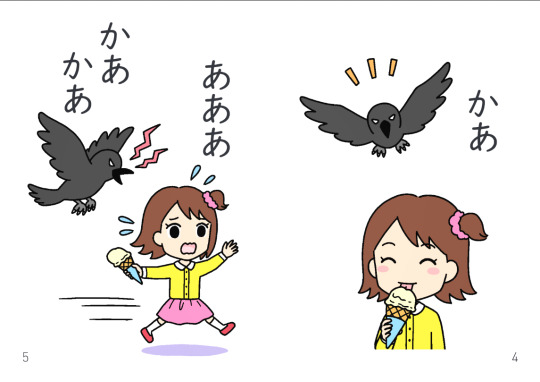
The free graded reader 「どうぞ、どうも」 by the NPO Tagengo Tadoku only uses the words 「どうぞ」 and 「どうも」 to write an entire story. Again, this makes for a great exercise in reading hiragana and understanding context. Another "level 0" recommendation by the same NPO would definitely be 「しろい?くろい?」. This book uses the full range of hiragana characters but the grammar is simple and all used vocabulary is illustrated.
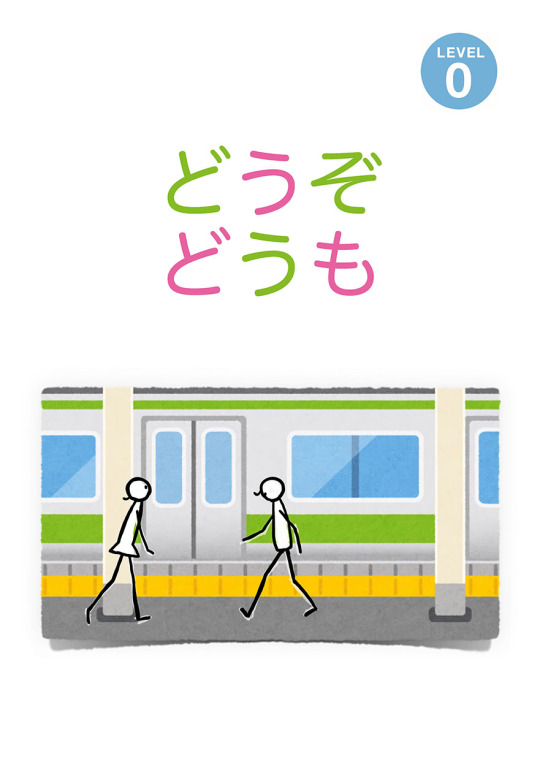
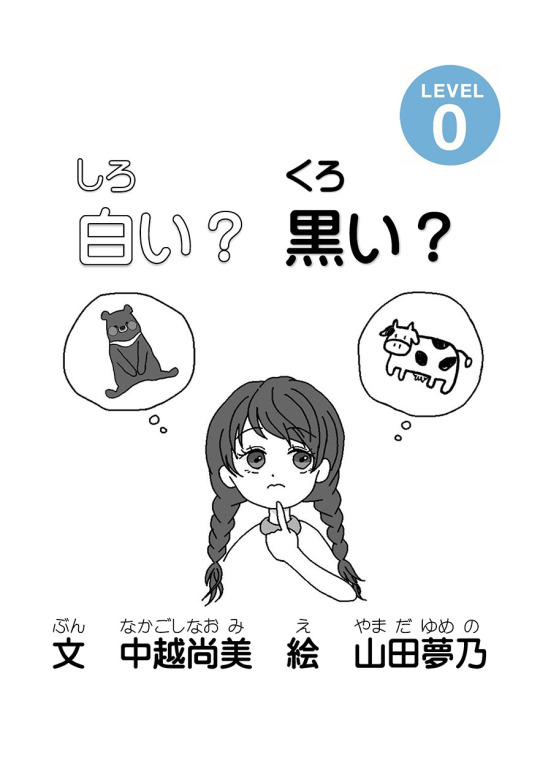
Another site with great resources for absolute beginners is Nihongo Tadoku Dōjō. If you have memorized both hiragana and katakana and know how the particles を and で work you will be able to read this text about stationary (ぶんぼうぐ) and understand everything by looking at the pictures!
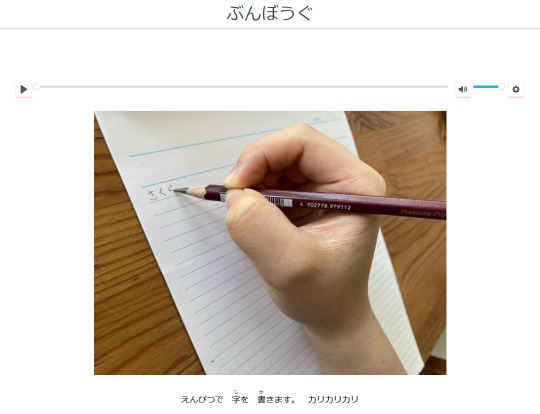
The resources linked so far can all be accessed completely free on the linked websites. If you have the money to spare, please also have a look at the box 「スタート」 from the series reberubetsu nihongo tadoku raiburarī published by the NPO Tagengo Tadoku and ASK (affiliate link). This box includes 8 little books in very simple Japanese.
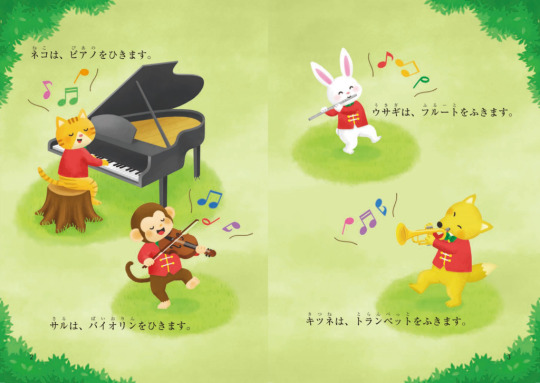
All these texts for absolute beginners will get you started reading in Japanese with very little knowledge of characters and vocabulary.
Reading in Japanese is a skill that requires practice. But once you get used to it, it can be such a valuable tool to reinforce new vocabulary and grammar. So please don't wait until you're "ready" before you start reading - start early at your own level!
#my book reviews#reading in japanese#study japanese#learning japanese#日本語#japanese books#やさしい日本語#free graded readers#free tadoku graded readers#nihongo tadoku dōjō#absolute beginner level#japanese langblr#japanese language#japanese reading comprehension#japanese free reading resources#japanese reading resources
1K notes
·
View notes
Text
a fellow japanese learning friend told me there's 2 major "weed-out" learning curves to japanese, and that's 1) learning hiragana and katakana and the 2) learning kanji.
but I propose that there's a 3rd difficult learning curve and that's when you're in what I've called The Intermediate Soup where you don't have any specific thing to work on anymore but you know that you aren't There Yet
#mocha speaks#japanese langblr#learning japanese#like. you already know hiragana/katakana and know enough kanji to make it through some readings#and you can speak a little and write a little#but there's no more easily defined goalposts and the ones that exist (like going by JLPT) are still nebulous#and even beyond things like JLPT you can be N1 level and still not know a lot of things.......#anyways in the Soup you just have to make your own goals but that's hard when most resources are for people not in the Soup#(i.e. still somewhat beginner focused)
230 notes
·
View notes
Text
Energy Explained in Other Systems
There is a lack of measurable evidence because any person that has worked with energies have had different experiences but were able to understand and manipulate energies according to their own will.
Energy has been used in many ways within culture and religion and have set beliefs depending on the system being practiced.
Next, are some given definitions defining energies within diverse philosophies.
Hindu = Prana
Chinese = Qi /Chi
Japanese =Ki
Greek = Pneuma
Hawaiian = Mana
Tibetan Buddhism = Lung
Hindu Philosophy
A Sanskrit word for "life force" or "vital principle" is often referred to as Prana. It is described as first coming down from the Sun and connecting all elements of the Universe. It has been invoked within the Hindu scriptures of the Vedas and Upanishads.
Prana is the belief of vitality surrounding all living beings. This energy is responsible for all bodily functions. There are five types of pranas, collectively known as the five vāyus.
1. Prāṇa: Beating of the heart and breathing. Prana enters the body through the breath and is sent to every cell through the circulatory system.
2. Apāna: Elimination of waste products from the body through the lungs and excretory systems.
3.Uḍāna: Sound production through the vocal apparatus. It represents the conscious energy required to produce the vocal sounds corresponding to the intent.
4. Samāna: Food digestions, repair or manufacture of new cells and growth, and heat regulations throughout the body.
5. Vyāna: The energy that is needed for the body to have proper circulation, and the functions for the voluntary muscular system in which there is expansion and contraction processes throughout the body.
Chinese Philosophy
The earliest texts in which Qi or Chi is described was in 'Analects of Confucius' where it could mean "breath" and was combined with the Chinese word for blood.
Xue-qi, "blood and breath."
Living beings are born because of an accumulation of qi, and as the beings live out their lives the qi declines eventually resulting in death. This indicates that xue-qi referred to all living things, but it is believed that qi or chi exists within all things tangible.
For example, the wind is the qi or chi to the Earth, and the cosmic concepts of yin and yang are "the greatest of qi"
Yin and Yang which means "bright-dark," and "positive-negative" are the opposing forces needed in order to complement the concept of balance. There are thoughts that this duality symbolizes contradicting energy forces which manifest as light and dark, fire and water, expansion, and contraction. With this said, Chinese medicine states that the balance of negative and positive forms in the body are believed to be essential for overall satisfactory health.
Japanese Mythology
During the sixth and seventh centuries the Chinese word qi (or chi) was written using the same kanji script for their interpretation for energy being "Ki"
However, the meanings are a tad different.
While the Chinese use chi or qi to describe that energy exists in all things, animate and inanimate objects, the Japanese believe it is the creative flow and expressions used within our daily lives, martial arts, and symbolizes aspects of nature, and thusly the spirits. It is the transfer from living, animate beings in to inanimate which can change and manifest into various forms. It is the necessary intentions one wields.
Greek Mythology
Pneuma, "The breath of life" or "vital spirit" is composed of kinetic energies within the vessel, while Ignis is composed of thermal energies. All human beings need both kinetic and thermal energies in order to properly function.
In Greek medicine, pneuma is the form of circulation throughout the body's vital organs. Due to this the role, pneuma plays within the body to sustain consciousness. Some physiological theories suggest that the pneuma mediates between the heart, and the heart is regarded as the seat of the mind, and the brain.
In similar, Stoic philosophy, pneuma is the active and generative principles that are organized between the individual and the cosmos. The highest forms are the Gods, and the human soul. The human soul is believed to be fragments of the gods given life force in order to be born and given a vessel upon the physical plane. This exists within all animate and inanimate objects as energy transfers and changes.
Hawaiian Mythology
Mana, the spiritual energy of power and strength. This energy exists within places and people; however, it is said that mana is both external and internal concepts.
The Hawaiian people believe that individuals can gain mana or lose it depending on one's actions in everything that they do.
In mythology there were two ways to gain mana, and this was either done sexually or through violence.
To sexually gain mana one must invoke the god, Lono, deity of peace and fertility.
To gain mana through violence one must invoke the god Ku, deity of war and politics.
Tibetan Buddhism
Lung means the wind or breath. Exists as a key concept in Vajrayana traditions. Generally, it's concept relates to the understanding of the subtle body, and Three Vajras. Those three are the body, speech, and mind. Lung relates to the subtle flow of energy and the five elements. (Fire, Water, Earth, Space, and Air) Lung is mostly closely connected to the Air Element.
Lung has also been used to describe the winds or prana being used in conjunction with the subtle body during a time of exercise, but also more importantly everyday functions of the body and its own senses. There are five psychic winds which manifest into mahabhuta. These five relate to the lifeforce that animate the body-mind (namarupa) of all sentient beings.
The Five Root or Major Winds
The root winds support an element and is responsible for a function of the human body.
The 'life-supporting wind' (Tib. སྲོག་འཛིན་རླུང་, sok dzin lung; Wyl. srog 'dzin rlung). Located in the brain, this lung regulates functions such as swallowing, inhalation, and concentration.
The 'upward-moving wind' (Tib. གྱེན་རྒྱུ་རླུང་, gyengyu lung; Wyl. gyen rgyu rlung). Located in the chest and thorax, this lung regulates, among other things, speech, the body's energy and vitality, memory, mental endeavour and diligence.
The 'all-pervading wind' (Tib. ཁྱབ་བྱེད་རླུང་, khyap ché lung; Wyl. khyab byed rlung). Residing in the heart, this lung controls all the motor activities of the body.
The 'fire-accompanying wind' (Tib. མེ་མཉམ་གནས་རླུང་, me nyam né lung; Wyl. me mnyam gnas rlung). Found in the stomach and abdomen area, the fire-accompanying wind regulates digestion and metabolism.
The 'downward-clearing wind' (Tib. ཐུར་སེལ་རླུང་, thursel lung; Wyl. thur sel rlung). Located in the rectum, bowels and perineal region, this lung's function is to expel faeces, urine, semen, and menstrual blood. It also regulates uterine contractions during labour.
The Five Branch Winds
The five branch winds enable the senses to operate.
The naga wind (Tib.ཀླུའི་རླུང་, lu'i lung; Wyl. klu'i rlung). This lung connects with the eyes and sight.
The tortoise wind (Tib. རུ་སྦལ་གྱི་་རླུང་, rubal gyi lung; Wyl. ru sbal gyi rlung). This wind connects with the heart and the sense of hearing.
The lizard wind (Tib.རྩངས་པའི་རླུང་, tsangpé lung; Wyl. rtsangs pa'i rlung) associated with the nose and the sense of smell.
The devadatta wind (Tib.ལྷས་བྱིན་གྱི་རླུང་, lhéjin gyi lung; Wyl. lhas byin gyi rlung) related to the sense of taste.
The 'king of wealth deities' wind (Tib. ནོར་ལྷ་རྒྱལ་གྱི་རླུང་, nor lha gyal gyi lung; Wyl. nor lha rgyal gyi rlung). This wind connects with the body and the sense of touch.
#energy work#pagan#witch#witch community#pagan witch#witchblr#witchcraft#beginner witch#baby witch#witch tips#energy manipulation#philosophy#theology#greek mythology#hindu mythology#buddhism#hawaii mythology#chinese mythology#japanese mythology#metaphyics#metaphysical#spiritualism#spirituality
373 notes
·
View notes
Text
N5 Grammar Review: Vない
The ない form of the verb is used to mean "not" or "don't". I'm going to make some posts about grammar that uses this form soon, but first I thought it'd be good to go over how exactly we get the ない form.
To make the ない form:
Group 1: change the last 'u' in the dictionary form to 'a', then add ない:
書く(かく)→ 書かない [to write -> not write]
話す(はなす)→ 話さない [to speak -> not speak]
立つ(たつ)→ 立たない [to stand -> not stand]
遊ぶ(あそぶ)→ 遊ばない [to play -> not play]
読む(よむ)→ 読まない [to read -> not read]
知る(しる)→ 知らない [to know -> not know]
Be careful! If the verb ends in う, it becomes わ:
歌う(うたう)→ 歌わない [to sing -> not sing]
買う(かう)→ 買わない [to buy -> not buy]
Group 2: add ない to the stem:
食べる(たべる)→ 食べない [to eat -> not eat]
寝る(ねる)→ 寝ない [to sleep -> not sleep]
見る(みる)→ 見ない [to see -> not see]
教える(おしえる)→ 教えない [to teach -> not teach]
Group 3 of course is a bit different:
する → しない [to do -> not do]
来る(くる)→ こない [to come -> not come]
The ない form is used in casual speech to mean "don't/doesn't do":
Particles in brackets because you can drop them in casual speech.
魚(は)食べない さかな(は)たべない = I don't eat fish
父(は)雑誌(を)読まない ちち(は)ざっし(を)よまない = My dad doesn't read magazines
コーヒー(を)全然飲まない コーヒー(を)ぜんぜん のまない = I don't drink coffee at all
Other than that, the ない form is used a lot as a base for more complex grammar. It's important to get to grips with it early on.
I'm still a beginner myself (I'm only N4 level!) so please let me know if I've made any mistakes!
#japanese langblr#learning japanese#japanese grammar#japanese for beginners#beginner japanese#n5#n5 grammar
122 notes
·
View notes
Text
How long does it take to master Hiragana and Katakana?
As you know, learning Hiragana and Katakana is the first step to learn everything about Japanese language. Depending on your time investment, your goals, the learning duration will be different!
It takes 1-4 weeks to master these Japanese alphabets normally. Let's start learning Hiragana with MochiKana and you'll be able to memorize all characters in just one week!
2 notes
·
View notes
Text

Beetle Floating in Space 🪲
#artists on tumblr#artwork#art#oil pastel#beetle#insect#insects#drawing#traditional art#traditional drawing#colourful#space#galaxy#astronomy#sky#japanese beetle#young artist#beginner artist#bright colors#rainbow#nature#selling art#art for sale#commissions open#art comms open#art commissions open
21 notes
·
View notes
Text
they are on my whiteboard now


#yes i still think about them. some crumbs for you rggheads#ourghhh goromi... prettyy ....#rgg#ryu ga gotoku#goromi#majima goro#kiryu kazuma#skrunkart#theyre going away soon bc im using this whiteboard to practice hiragana but i thought they looked nice enougj to post :3#also if you're wondering the hiragana thing STARTS TODAY so thats why i havent been telling y'all my adventures#in like. baby beginner japanese#frankly im surprised it didn't happen sooner but whatever#ough drawing them is so nice. byeah
42 notes
·
View notes
Text
i've learned a lot of phrases so far! but i wanted to write down some phrases to work harder on to remember:
よろしくおねがいします / yo-ro-shi-ku-o-ne-ga-i-shi-ma-su
~ではありません / [name] de-wa-a-ri-ma-se-n
いってらっしやい / i-tte-ra-sshi-ya-i
いってきます / i-tte-ke-ma-su
ただいま / ta-da-i-ma
おかえりなさい / o-ka-e-ri-na-sa-i
and using の (no) in sentences.
#i think i'll dedicate the next few days to a week tryna cement it in my brain =7=#maybe one phrase per day to keep it doable#baffy talks#japanese langblr#japanese beginner
11 notes
·
View notes
Text
Troubleshooting Photoshop: you just need a manual, a dictionary, and a topographical map of the entire interface to find what setting you fucked up with an accidental shortcut keysmash
Troubleshooting cameras: probably missed a hidden menu or something. Start over from the beginning. Cross your fingers you find it before the setting is moot because the subject of the photo is gone
Troubleshooting computers: try 10 different fixes and find out you should have just rebooted to begin with
Troubleshooting weaving: most likely an issue with the warp
Troubleshooting writing: either the problem is 3 paragraphs back or it's 3 a.m. and nothing makes sense
Troubleshooting fountain pens: pick a god and pray
#personal#it's not going well with the pen folks#just gimme a rough draft I don't need a magnifying glass and obscure reddit threads to figure that one out#but the pen??! is too dry#the opposite of what you want a pen to be#I don't want to break it but neither do i want to mess around with it forever#getting this fucking this working might end up being my white whale in the hobby#i could just go to the pen show and have someone look at it but that's kind of ridiculous#as of right now the dang thing writes thinner than my F japanese *sailor* pen#<- cue for dramatic gasps#now i have ink all over my fingers from trying to fix a M-B nib#granted I don't even know what's normal#curse of the beginner
7 notes
·
View notes